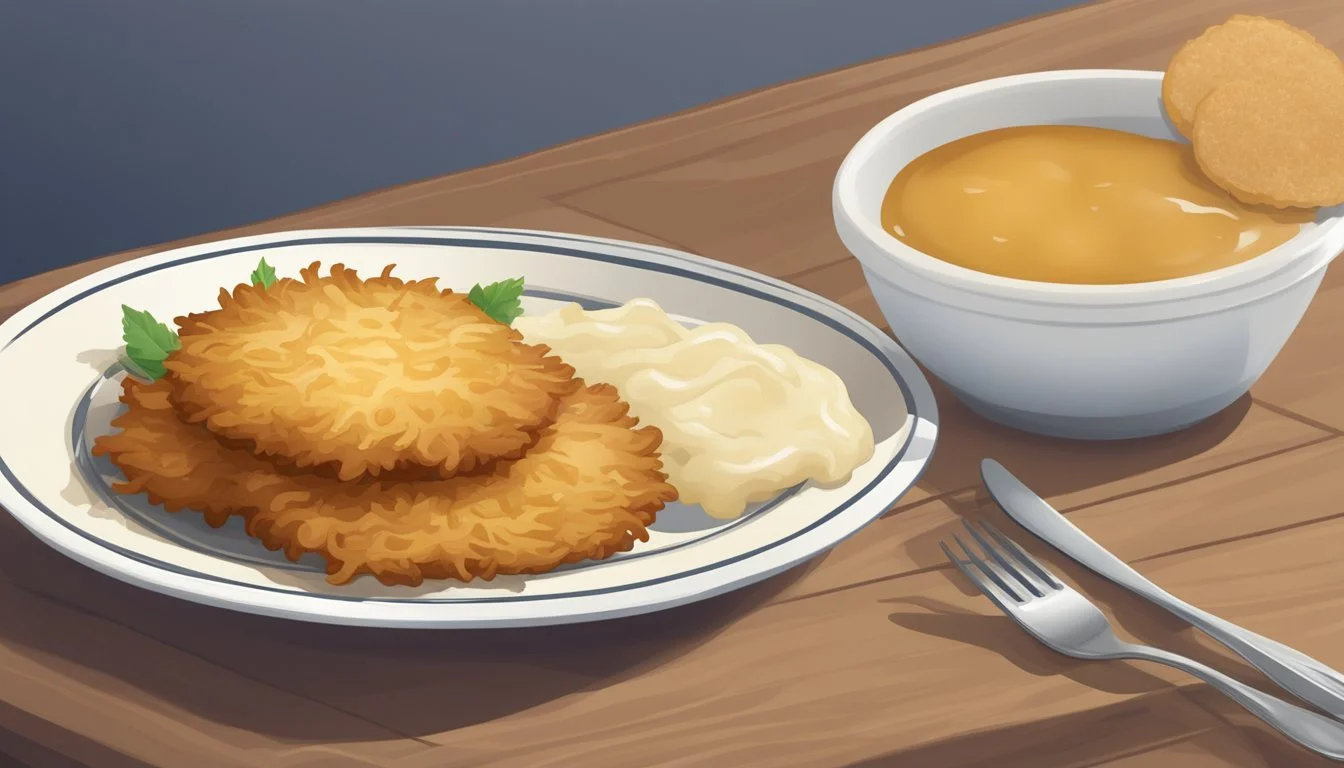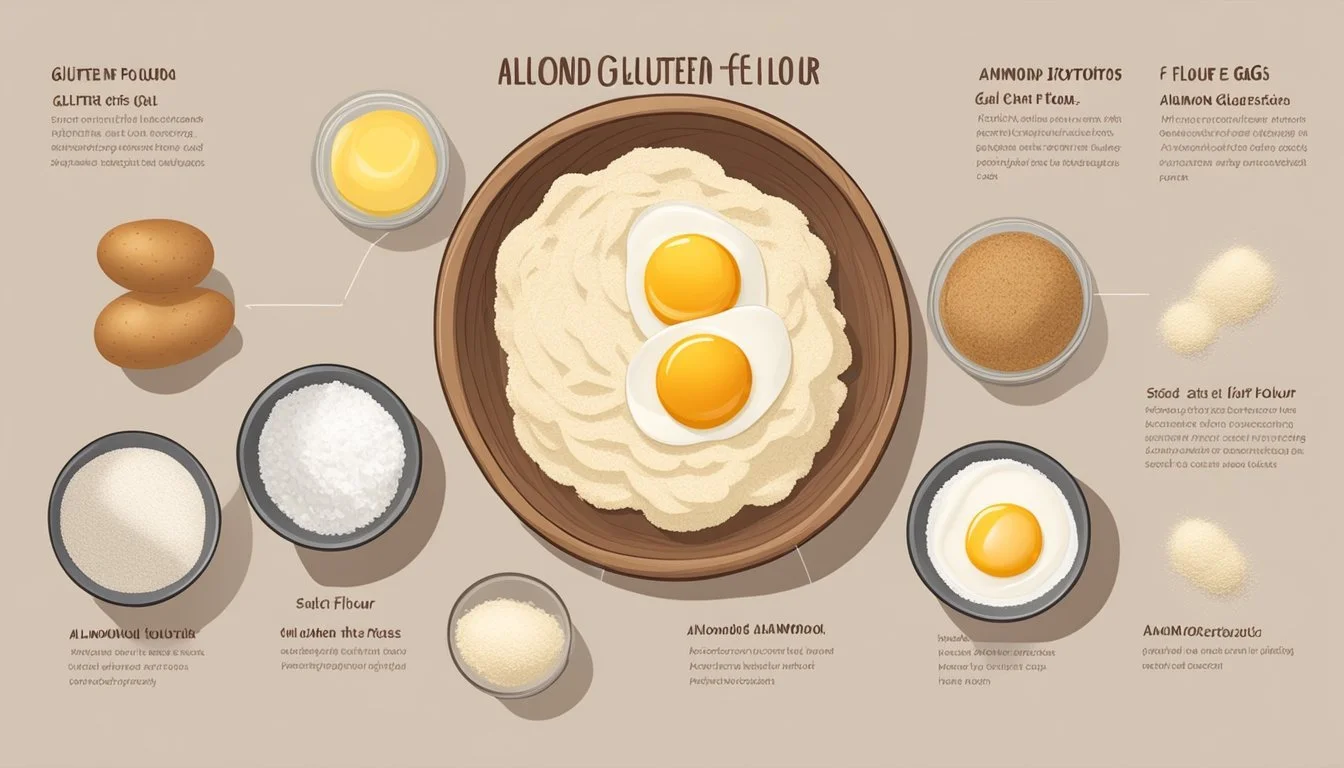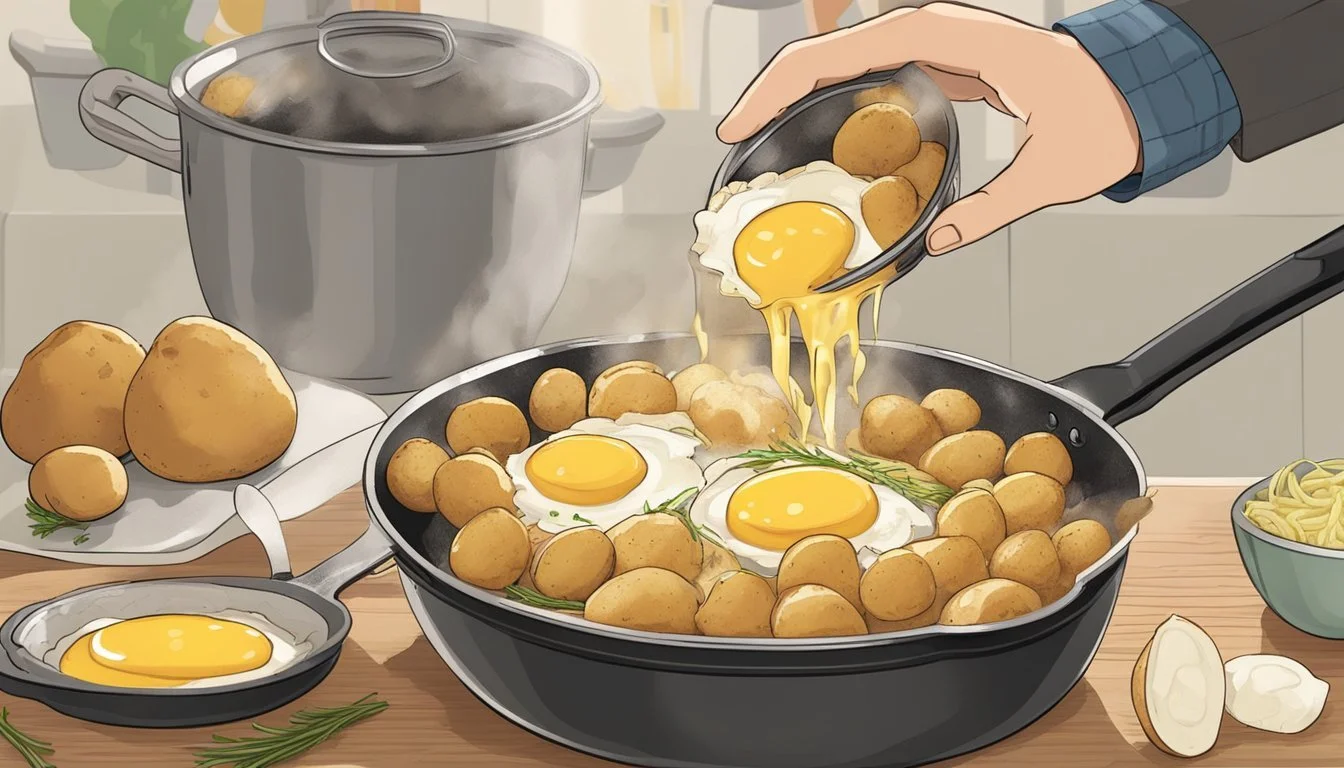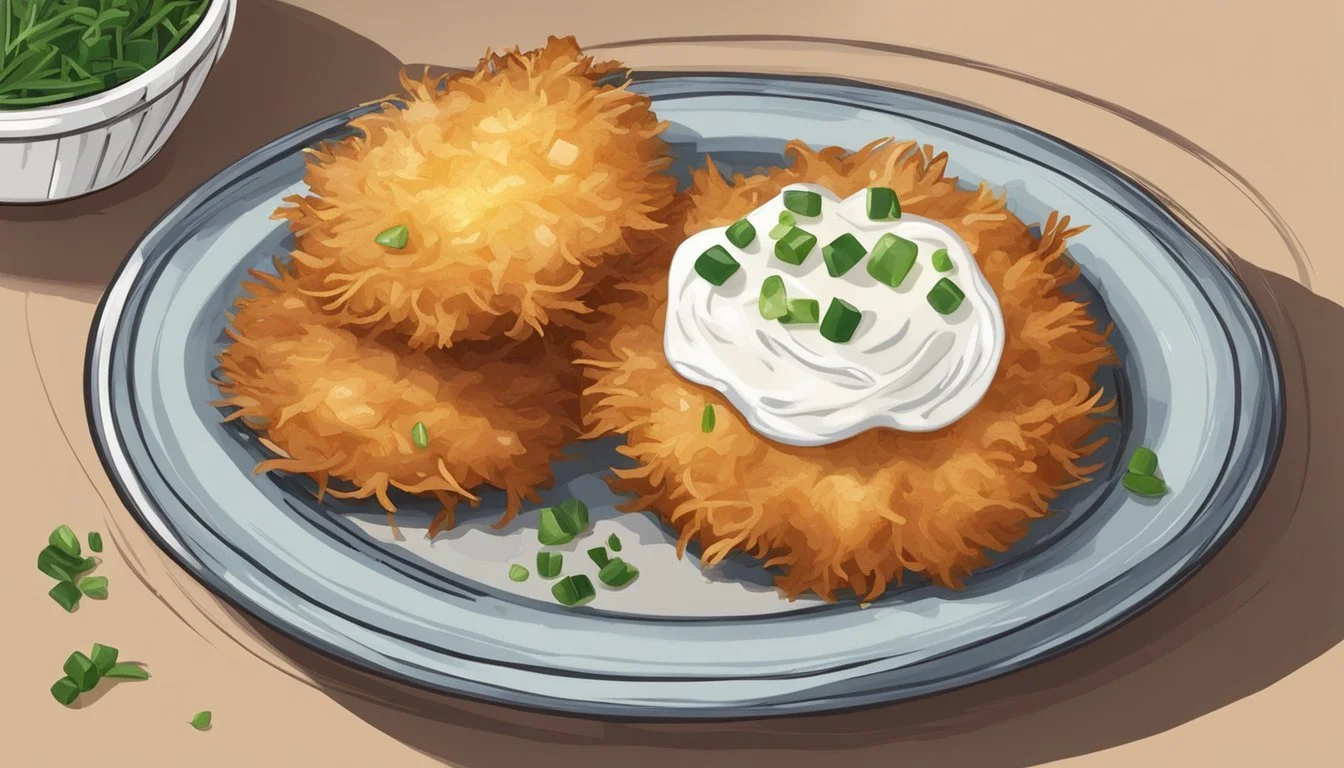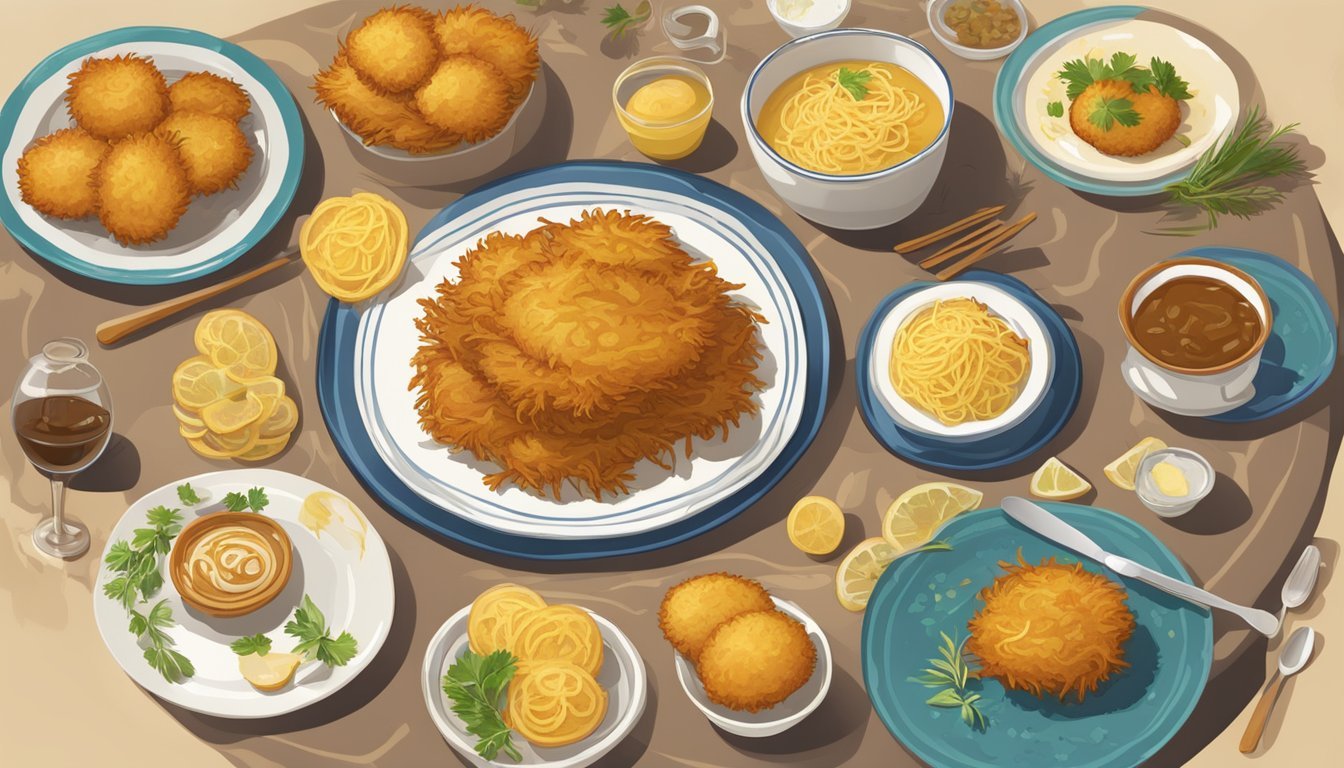Are Potato Latkes Gluten-Free?
Identifying Ingredients for Celiac Safe Options
Potato latkes are a traditional Jewish dish commonly enjoyed during the Hanukkah season, although they have also found a place in the broader culinary world as a versatile and satisfying option for many occasions. These delightful, crispy pancakes are typically made with grated potatoes, (What wine goes well with potatoes?) onions, eggs, and a type of flour or starch as a binding agent, then fried until golden brown. The question of whether they are gluten-free depends largely on the choice of binding agent used in the recipe.
The primary ingredients in classic latke recipes are naturally free of gluten, with potatoes, onions, and eggs posing no risk for those with gluten sensitivities or celiac disease. However, many traditional versions do use wheat flour as a binder, which contains gluten and is off-limits to those adhering to a gluten-free diet. Fortunately, adapting the recipe to be gluten-free is straightforward and can involve substituting wheat flour with gluten-free alternatives such as rice flour, arrowroot, or potato starch.
For those concerned about gluten, preparation and cooking environment are essential considerations to avoid cross-contamination. Ensuring that all surfaces, utensils, and frying oil have not come into contact with gluten-containing ingredients is crucial for keeping latkes gluten-free. By paying careful attention to the choice of ingredients and maintaining a controlled cooking space, it is absolutely possible for potato latkes to be a deliciously safe part of a gluten-free diet.
The Gluten-Free Diet and Potato Latkes
Potato latkes traditionally include ingredients such as potatoes, onions, eggs, and flour. Within a gluten-free diet, the goal is to eliminate gluten, a protein found in wheat, barley, and rye. The challenge in making gluten-free potato latkes lies in substituting the flour with a gluten-free alternative while maintaining the latkes' integrity and taste.
Understanding Gluten
Gluten is a protein complex found primarily in wheat and related grains, such as barley and rye. It gives bread its chewy texture and is also used as a binding agent in a variety of other foods. People with celiac disease, non-celiac gluten sensitivity, or wheat allergy avoid gluten because it triggers a harmful immune response in their bodies.
Sources of Gluten:
Wheat and wheat varieties (e.g., spelt, kamut)
Barley
Rye
Triticale (a cross between wheat and rye)
The Basics of Gluten-Free Cooking
In gluten-free cooking, replacing wheat flour is essential. Potato latkes can be made gluten-free with suitable substitutions for the wheat-based flour typically used as a binding agent.
Chickpea flour
Potato starch
Rice flour
Arrowroot powder
When preparing gluten-free potato latkes, one must ensure that all ingredients, including cooking oils and seasonings, are gluten-free. Cross-contamination with gluten-containing products should be avoided, which is especially important when frying, as shared oils can retain particles of gluten.
Ingredients and Substitutions
When preparing gluten-free potato latkes, it is crucial to consider the types of potatoes, gluten-free binding agents, and additional flavor elements to ensure the dish maintains its traditional taste and texture without gluten.
Choosing the Right Potatoes
Types of Potatoes: For the best results, starchy potatoes such as Russet potatoes or Yukon Gold potatoes are preferred due to their ability to create a crispy exterior when fried. They should be grated and excess moisture should be removed to prevent sogginess.
Russet Potatoes: Ideal for a crispy finish.
Yukon Gold Potatoes: Offer a creamier texture and a golden hue.
Gluten-Free Binding Agents
Binding Agents: Traditional latkes may use wheat flour or matzo meal as a binder, but there are several gluten-free alternatives:
Rice Flour: Provides a delicate and light structure.
Potato Starch: Enhances crispiness and binds well.
Gluten-Free Flour Blends: Readily available and designed to mimic wheat flour.
Cornstarch: Another fine substitute that aids in binding and crisping.
To replace matzo meal, a combination of these gluten-free starches and flours is often effective. The quantity should be adjusted according to the desired consistency.
Additional Flavor Elements
Enhancing Flavor:
Onion and Garlic: Finely chopped or grated onion and minced garlic are essential for a savory depth.
Eggs: Act as a binding agent and contribute to the structure.
Seasonings: Salt and pepper are fundamental, but additional herbs like parsley or chives can be added for freshness.
Cheese: For those looking for a creative twist, adding a small amount of cheese like cheddar or feta can create richer flavors.
When adding these additional ingredients, one must integrate them carefully to ensure that the flavors complement one another and do not overpower the potato.
Traditional Potato Latkes Recipe
A traditional potato latkes recipe is a centerpiece for Hanukkah celebrations, serving as a classic food relished for its crispy exterior and tender core. This recipe respects the time-honored methods yet remains versatile enough to be adapted using modern kitchen tools.
Preparation Techniques
To create authentic potato latkes, start with russet potatoes due to their ideal starch content, which helps achieve the requisite texture. The preparation begins by peeling the potatoes and shredding them into fine strips using either a grater or, for expedited prep time, a food processor. The key step involves removing excess moisture to ensure the latkes become crispy when cooked. One should transfer the grated potatoes onto a kitchen towel or cheesecloth and squeeze firmly, or alternatively, strain them through a colander lined with these fabrics.
Traditionally, a kitchen towel serves as an indispensable tool for this task. Combining the dry grated potatoes with a binding agent such as egg affirms the pancakes' consistency upon cooking. At this stage, cooks typically add a seasoning blend of salt, pepper, and other optional spices tailored to their specific recipe.
Cooking Method
The classic method for cooking potato latkes is pan-frying, which imparts a signature golden-brown crust. It is essential to select the right oil for frying, with olive oil being a popular choice due to its medium-high smoke point and traditional flavor; however, other oils can be utilized based on preference or dietary restrictions. The oil temperature is a critical factor and should be around 375 F to ensure that each latke cooks through evenly without absorbing excess oil.
It is recommended to use a skillet or, for better splash control, a Dutch oven. One tests a small amount of the potato mix in the oil—the test latke—to gauge if the oil is adequately heated. Using a spatula, the cook portions the potato mixture into the hot oil and shapes it into round or oval potato pancakes. These hash browns-like pancakes should cook for about 4-5 minutes on each side until reaching the desired crispness. Once cooked, the latkes are removed from the oil and placed on a baking sheet lined with paper towels to drain any remaining oil.
To summarize, a traditional potato latkes recipe typically entails a prep time and cook time totaling less than an hour, yielding multiple servings of delicious, crispy hash browns. The calories per serving vary depending on the size of the latkes and the amount of oil used for frying. With careful attention to shredding and moisture removal, followed by attentive frying, even novice cooks can achieve the classic potato latke that's become synonymous with Hanukkah and comfort cuisine alike.
Gluten-Free Latkes Variations
Making gluten-free latkes opens up a world of possibilities, from sweet to savory tastes and a choice of flours to innovative garnishes that elevate this traditional dish.
Savory and Sweet Options
Gluten-free latkes can be easily adapted to suit a variety of flavor profiles. For savory latkes, consider adding shredded sweet potatoes or a mix of traditional white potatoes and sweet potatoes for a subtle sweetness and a nutritional boost. A dash of black pepper and herbs such as chives or parsley can accentuate the savoriness. For sweet variants, incorporate cinnamon and serve with apple sauce on the side to complement the flavors.
Alternative Flour Options
To achieve the desired crispiness without gluten, alternative flours play a pivotal role in preventing gluten-free latkes from falling apart. Some excellent gluten-free flour options include:
Almond flour for a nutty taste
Coconut flour for a slight sweetness
Chickpea flour for a protein-rich choice
Each flour provides a distinctive texture and flavor, while ensuring the latkes remain cohesive during cooking.
Creative Toppings and Accompaniments
While traditional toppings like sour cream and apple sauce are always popular, gluten-free latkes can be enhanced with a variety of creative condiments:
Tzatziki or pesto for a Mediterranean twist
A small dollop of apple sauce for a classic pairing
A sprinkle of fresh herbs for added freshness
For those seeking a healthier alternative, cooking latkes in an air fryer with just a little oil or opting for lighter oils such as avocado oil can reduce fat content while maintaining crispiness. After frying, placing latkes on a cooling rack can help preserve their crisp texture. If making a large batch, latkes can be frozen on a baking sheet and transferred to a freezer bag for long-term storage, ensuring that a delicious gluten-free option is always at hand.
Tips for the Perfect Latkes
Crafting perfect latkes requires attention to detail. Here are expert tips to ensure latkes are deliciously crispy and well-preserved for later enjoyment.
Preventing Sogginess
Sogginess in latkes often stems from excess moisture in the potato mixture. To combat this, one should strain the grated potatoes and onions thoroughly. Using a kitchen towel, they can roll and wring out the moisture before mixing with the other ingredients. Arrowroot flour or potato starch can aid in binding and further reducing moisture.
Achieving Ideal Crispiness
To achieve a desirable golden brown crispiness, chefs should heat the oil for frying to the correct temperature—ideally around 365 degrees F. They need to fry the latkes in hot oil until each side is golden brown. It’s crucial to avoid overcrowding the pan, as this can lower the oil temperature and result in a less crispy outcome.
Storage and Reheating Tips
For storing leftovers, it's best to place latkes in an airtight container and keep them in the fridge to maintain freshness. They can also freeze well for longer storage. To reheat, one should bake them in a single layer in an oven until they are heated through and crisp. This method helps maintain the texture and flavor of the latkes better than microwaving.
Serving and Presentation Ideas
Potato latkes often evoke strong family traditions around their serving and presentation, especially during festive occasions. Whether one opts for gluten-free latkes or the classic version, the way they are served can vary from traditional to modern, depending on the setting and personal preference.
Traditional Serving Suggestions
Gluten-free latkes, like their gluten-containing counterparts, are traditionally served with a dollop of sour cream or apple sauce. These condiments complement the crispy texture of the pancake, providing a balance of flavor—tartness or creaminess against the savory taste of the latke. For those following a specific cuisine or dietary restrictions, tzatziki or cream cheese alternated with chives can serve as innovative yet traditional accompaniments. To maintain freshness, it's best to store any leftovers in an airtight container.
Sour Cream: Offers a rich, tangy contrast to the latke.
Apple Sauce: Adds a sweet and slightly tart flavor balance.
Modern Plating Techniques
Embracing modern plating techniques, gluten-free latkes can be transformed into a visually appealing dish suitable for more contemporary settings. Consider serving them stacked with layers of hummus or pesto for a fusion twist, or atop a smear of sour cream with a sprinkle of fresh herbs for enhanced appeal. When preparing potato pancakes, one might use a food processor for consistent shredding of russet potatoes. Always season your mixture properly and cook in a skillet to achieve that desired golden-brown perfection. Mindful plating focusing on aesthetics can also help in managing calories by encouraging smaller, more deliberate portions.
Presentation: Stack latkes with spacing, or serve over a smear of sauce.
Herbs: Garnish with fresh herbs to accentuate taste and visual appeal.
Health and Nutrition Considerations
When considering health and nutrition for potato latkes, two primary factors are their caloric content and potential food allergens, such as gluten. Additionally, the shift to gluten-free potato latkes can offer benefits for those with gluten-related disorders or those choosing a gluten-free diet for personal health reasons.
Caloric Content and Allergies
Potato latkes are traditionally fried potato pancakes and, as such, contain calories from both the potatoes and the frying oil. The caloric content can vary, but a single latke may range from 100 to 200 calories, depending on its size and the amount of oil used in cooking.
Allergies are a significant consideration, especially with gluten being a common allergen. Traditional potato latkes may be gluten-free if made with potatoes, onions, and eggs alone. However, additives like flour are often used to bind the ingredients, which can introduce gluten into the dish. To ensure that latkes are gluten-free, one must use gluten-free flour substitutes such as arrowroot flour or a gluten-free all-purpose blend.
Benefits of Gluten-Free Potato Latkes
Gluten-free potato latkes are a safe option for individuals with celiac disease or gluten sensitivity. By using gluten-free flours, these individuals can enjoy latkes without the fear of gluten-induced health issues. Additionally, latkes can be made with sweet potatoes, which are a nutritious alternative to regular potatoes due to their lower glycemic index and higher vitamin content.
By choosing gluten-free ingredients, the nutritional profile of potato latkes can be tailored to fit dietary needs while still providing the same satisfying, crispy texture and savory taste that is loved by many.
Potato Latkes in Cultural Traditions
Potato latkes hold a significant place in Jewish culinary history, particularly during Hanukkah festivities, and have global variations as a common potato pancake.
Latkes and Hanukkah
Latkes are a staple of Hanukkah, the eight-day Jewish festival of lights. This traditional Jewish cuisine is deeply intertwined with the miracle of the menorah, commemorating the one day's worth of oil that miraculously lasted for eight days in the Temple of Jerusalem. Latkes, typically made of shredded potatoes, eggs, and seasoning, are fried in oil, symbolizing this miracle. While they can be made gluten-free, ensuring they are free from cross-contamination is crucial in kitchens handling gluten-containing ingredients.
Potato Pancakes Across the World
Potato pancakes are a universal dish with variations seen in several cultures around the world:
Eastern Europe: Known as 'latkes' in Yiddish-speaking countries and with other names in non-Jewish communities, they're a beloved part of the local cuisine, enjoyed with diverse toppings such as sour cream or applesauce.
German Cuisine (What Wine Pairs Perfectly With German Cuisine): Referred to as "Kartoffelpuffer," these pancakes are similar to Jewish latkes and are also enjoyed with a variety of condiments.
Irish Cuisine: The "boxty" is a form of potato pancake that uses both mashed and grated potatoes, highlighting the versatility of the dish.
These potato-based dishes are celebrated for their crispy texture and savory flavor, marking them as festive food in traditions beyond the Jewish culture.
Frequently Asked Questions
This section addresses common inquiries related to preparing gluten-free potato latkes, ensuring that individuals with sensitivities or celiac disease can relish this classic dish without concern. Expert recommendations provide clarity on ingredient substitutions and preparation techniques.
Common Concerns
Are traditional potato latkes gluten-free?
Traditional potato latkes may contain flour, which has gluten. However, they can be made gluten-free by substituting flour with potato starch or another gluten-free alternative like arrowroot or rice flour.
Can I use regular potatoes in gluten-free latkes?
Yes, potatoes are naturally gluten-free and are the base of any latke recipe. The key is to ensure that all other ingredients and the preparation environment are free from gluten contamination.
Is potato starch necessary for gluten-free latkes?
Potato starch is a preferred ingredient in gluten-free recipes for its binding properties and ability to create a crispy texture. One can substitute with suitable gluten-free flours if potato starch is unavailable.
Gluten-Free Ingredients: Ensure all ingredients, including seasoning and baking powder if used, are gluten-free.
Preparation Surface: Prevent cross-contamination by using clean and dedicated utensils and cookware.
Expert Advice
What are the steps to making gluten-free potato latkes ahead of time?
One can prepare gluten-free latkes ahead of time by shaping the mixture into patties and storing them in the refrigerator. They can also be cooked and then frozen, reheating in the oven to maintain crispiness.
Can I freeze gluten-free latkes?
Gluten-free latkes freeze well. Let them cool after cooking, then place them in a single layer on a baking sheet to freeze. Once frozen, transfer to a sealed container or freezer bag.
Freezing Steps:
Cool latkes completely.
Arrange in a single layer on a baking sheet.
Freeze until solid.
Transfer to an airtight container or freezer bag.
What is the expert-recommended oil temperature for frying gluten-free latkes?
Experts recommend heating oil to about 375°F for the ideal frying temperature. This ensures that the latkes are crispy on the outside and cooked through on the inside without absorbing excess oil.

